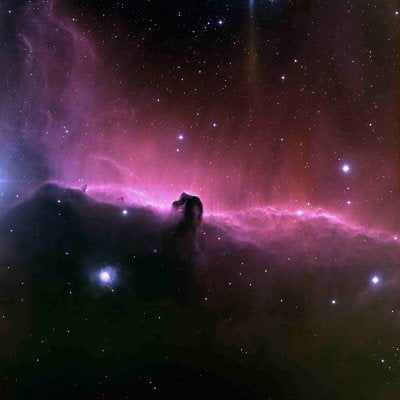Brown dwarfs should pulsate when they’re young, predict astronomers in Italy and France. Such pulsations may already have been detected in Orion.
Brown dwarfs are born with too little mass — less than 8 percent of the Sun’s — to sustain the fusion of hydrogen-1, the nuclear reaction powering main sequence stars like the Sun. Brown dwarfs still shine, though, chiefly by transforming gravitational energy into heat. When young, they also generate energy by converting deuterium into helium-3. Deuterium is hydrogen-2, the rare heavy isotope of hydrogen.
Deuterium fusion should cause brown dwarfs and very-low-mass red dwarfs to pulsate, say Francesco Palla of the Arcetri Astrophysical Observatory in Italy and Isabelle Baraffe at the Astronomical Research Center of Lyon in France. They will present their idea in a future issue of the journal Astronomy and Astrophysics.
Deuterium burns at a cooler temperature than ordinary hydrogen, which explains why even brown dwarfs can ignite it. But deuterium fusion is exquisitely sensitive to a star’s temperature. The amount of energy generated is proportional to the twelfth power of a star’s temperature, so doubling the temperature boosts the energy output over 4,000 times.
The best known pulsating stars are Cepheids, yellow supergiants that expand and contract every few days, weeks, or months, making their light wax and wane with the same period. The bigger and brighter a Cepheid, the longer it takes to pulsate — so merely measuring a Cepheid’s period reveals the star’s intrinsic brightness and, hence, the distance to its parent galaxy.
Brown dwarfs should pulsate faster than Cepheids. Still, like Cepheids, the more massive the star, the longer its period should be. Palla and Baraffe calculate that a 0.02-solar-mass brown dwarf pulsates once an hour, whereas a 0.10-solar-mass red dwarf takes 5 hours to do the same.
The stars should pulsate only when young. That’s because deuterium is so rare — accounting for only one of every 50,000 hydrogen nuclei — that the stars quickly exhaust their supply. A 0.02-solar-mass brown dwarf consumes its deuterium in just 20 million years, while a 0.10-solar-mass red dwarf does the same in just 2.5 million years. Thus, observers who seek pulsating brown dwarfs should examine groups of young stars, such as those in the constellations of Orion, Taurus, and Chamaeleon.
Intriguingly, say Palla and Baraffe, such pulsations may have been seen in the Sigma (σ) Orionis cluster, just west of the Horsehead Nebula. The light of two stars in the 3-million-year-old cluster varies every 3 hours. Another star in the cluster has a period around 2 hours, and another varies every 46 minutes. Furthermore, the last star, named Sigma Orionis 45, has an estimated mass of only about 0.02 solar mass.
These light variations had been attributed to starspots and stellar rotation. But Palla and Baraffe say they may be the mark of pulsation.










